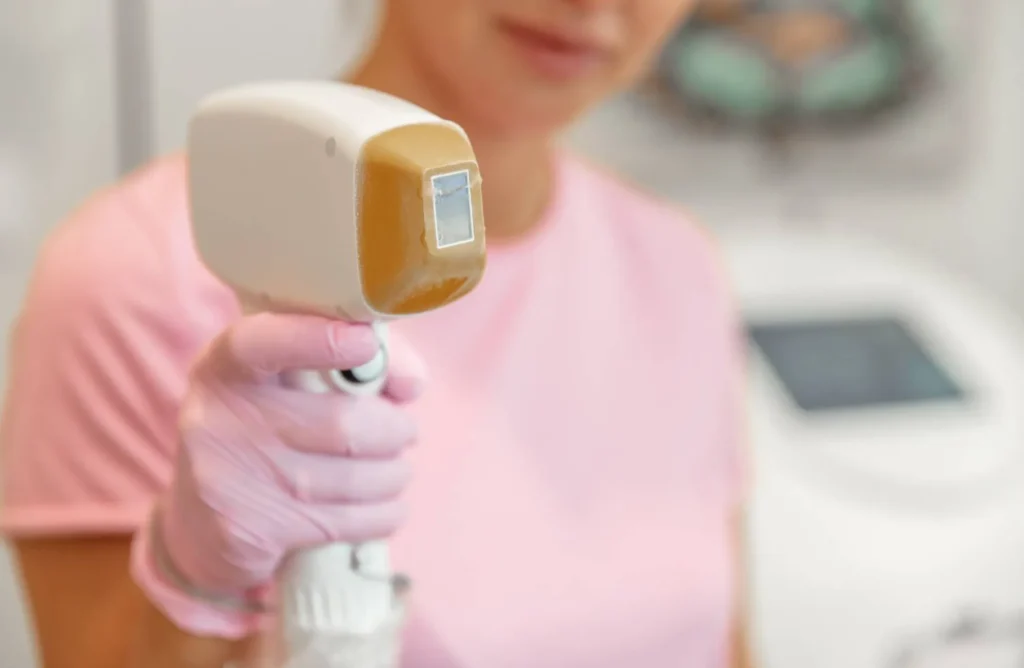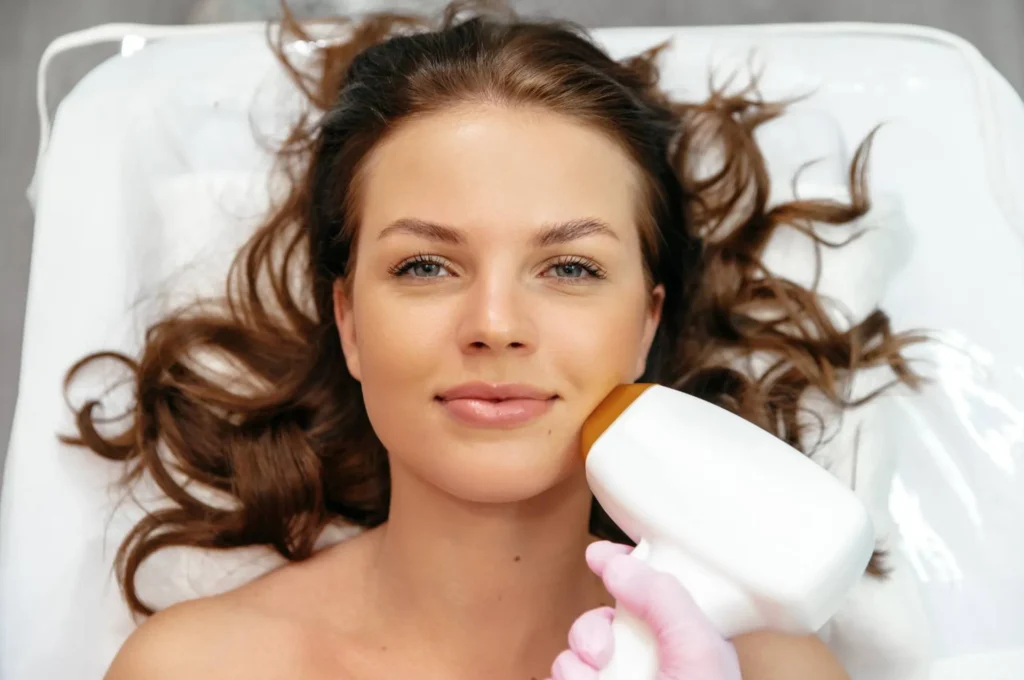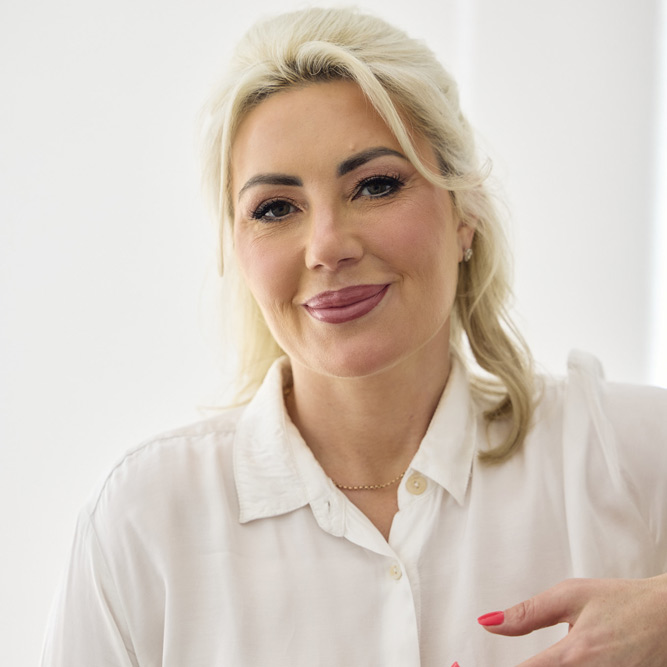
Can Laser Hair Removal Be Done At Home: Pros And Cons
Have you ever found yourself wondering if laser hair removal at home is a viable option? I know I did. After years of waxing, shaving, and threading, I was desperate for a more permanent solution, without the hefty price tag or the hassle of booking appointments. When I first came across at-home laser hair removal devices, I was intrigued but also a bit sceptical. Could they really work as well as professional treatments?
In this post, I’ll share my personal experience with DIY laser hair removal devices, diving into the pros and cons of at-home treatments, and comparing them to professional clinic options. If you’ve been thinking about giving it a go, I’ve got you covered with everything you need to know to make an informed decision. Whether you’re looking for convenience, cost savings, or just curious about how effective these devices really are, let’s dive into the world of at-home laser hair removal and uncover whether it’s the right fit for you.
How At-Home Laser Hair Removal Works?
When I first stumbled upon the idea of at-home laser hair removal, I was immediately intrigued – the thought of saving time, money, and hassle by doing it myself was enough to make me curious. But like many people, I soon realised that not all laser hair removal devices are created equal.
Most at-home devices don’t actually use “laser” technology, despite the name. Instead, they typically operate on Intense Pulsed Light (IPL), which might sound technical but is essentially just a broad spectrum of light, similar to the flash of a camera. This light targets the pigment in the hair follicle, generating heat to destroy it and prevent future hair growth.
In professional settings, things are a little different. Clinically, lasers like Diode or Alexandrite are used. These lasers target light at specific wavelengths, providing a more focused treatment that is highly effective. That’s why when people ask, “Can laser hair removal be done at home?” my response often starts with, “Yes, but with a bit of a difference in effectiveness.”
If you’ve ever considered DIY laser treatments, you’ll want to think of IPL as a “gentler cousin” to the powerful lasers used by professionals. IPL devices tend to be less powerful, which means they can’t always deliver the same results in the same timeframe.
Pros Of At-Home Laser Hair Removal
Convenience And Privacy
One of the biggest reasons I went down the at-home laser hair removal route was the sheer convenience. Life gets busy – between work, family, and the usual daily grind, I didn’t want to spend time scheduling appointments or running out for treatments. And let’s be honest, there’s something appealing about doing it all from the comfort of your own home.
At-home devices let you fit your treatments around your schedule. There’s no need to carve out extra time in your day or book multiple sessions. If you’ve got a quiet Sunday afternoon, or perhaps a rare evening with no plans, you can get your treatment done in a few minutes, in front of the TV, no fuss.
For some, privacy is a big deal, too. You’re in control of the process, with no need to sit in a clinic while someone else administers the treatment. This can be a relief, especially if you’re new to laser hair removal or feel self-conscious.
Cost-Effectiveness
When I first looked into the cost of at-home devices, I was surprised by how affordable they could be. Professional laser treatments can add up quickly, with each session costing anywhere from $150 to $500 AUD, depending on the area treated and the clinic’s pricing. Multiply that by 6-8 sessions, and you’re looking at $1,000-$3,000 AUD for a full course.
At-home devices, on the other hand, usually range from $200 to $500 AUD. While the upfront investment is higher than a single clinic session, it’s a one-time cost. Some high-end models can last for years with proper care. And when you factor in the convenience of not having to book or travel to appointments, the value becomes even clearer.
I’ll admit, at first, I hesitated to spend that much on an at-home device. But when I added up the number of professional sessions I’d need, it didn’t take long to see that the device would more than pay for itself in the long run.
Lower Pain Levels
Let’s face it – the idea of laser hair removal can sound a bit intimidating. We’ve all heard about the snap of a rubber band or the mild discomfort associated with professional treatments. But what I found surprising about at-home devices is how much less painful they are.
Professional lasers are more intense and can cause a deeper sensation of heat, but the lower-powered IPL devices used at home typically only cause a slight tingling or mild rubber band-like snap. If you’ve been worried about the pain factor, rest assured, most users find it far more tolerable at home, with adjustable intensity settings available to suit your comfort level.

Cons Of At-Home Laser Hair Removal
Reduced Power And Effectiveness
While it’s true that at-home devices offer plenty of benefits, I’d be remiss if I didn’t mention that they come with limitations. The biggest downside? The power, or lack thereof.
You see, IPL devices don’t pack the same punch as the professional lasers used in clinics. A professional treatment can target deeper hair follicles more effectively, leading to faster and more dramatic results. At home, however, you’ll need to be more patient. It’s going to take several months, sometimes even longer, to see results comparable to those of a clinic.
This difference in effectiveness became clear when I compared my progress to friends who had gone for professional treatments. While my at-home device definitely made a difference, it wasn’t as fast or noticeable as what they were experiencing.
Frequent And Consistent Use Is Required
Another reality check with at-home laser hair removal is that it requires a lot more commitment. When I started my treatments, I was under the assumption that after a few sessions, I’d be done. But, as with most DIY projects, there’s a bit more to it.
At-home devices require you to stick to a regular schedule for several months to see lasting results. For some people, that means weekly treatments for a few months, followed by regular maintenance. Contrast that to professional treatments, where six sessions spaced six weeks apart can often deliver more immediate and lasting results.
Safety Concerns And Risks Of At-Home Laser Hair Removal
Burns, Scarring, And Pigmentation Issues
When I first considered at-home laser hair removal, the safety aspect was at the forefront of my mind. I’d heard plenty of stories about people having bad experiences, with reports of burns, scarring, and pigmentation issues. I wanted to make sure I avoided those risks, especially since my skin is a little more sensitive than most.
It’s important to know that at-home devices can cause serious side effects if not used correctly. I made sure to follow all the instructions carefully, but I can imagine how easy it would be to overlook the importance of things like setting the intensity level properly or using the device on the wrong skin tone.
For instance, darker skin tones absorb light differently than lighter skin. IPL devices, while generally safe for light skin, can cause hyperpigmentation (darkening) or hypopigmentation (lightening) on darker skin tones because the melanin in the skin absorbs the light energy. Professional lasers can be calibrated to treat various skin tones safely, but at-home devices may not be as effective for everyone. In fact, IPL devices are typically not suitable for darker skin tones or light hair.
Not Suitable For All Skin And Hair Types
When I was researching the devices, I found that IPL works best on light skin with dark hair, as the light targets the melanin in the hair follicle. Unfortunately, this means blonde, grey, or red hair might not respond to the treatment at all.
In fact, I have a few friends who tried at-home treatments only to be disappointed because they had light blonde or grey hair. Their hair simply didn’t absorb enough of the light to see any results, which was frustrating for them. If you’re considering DIY laser hair removal, make sure your hair is dark enough for the device to effectively target.
And if you’ve got darker skin, you may want to be cautious. IPL devices are less effective on darker skin tones and come with an increased risk of side effects. In these cases, seeking a professional who can use a more appropriate laser, like Nd:YAG might be your best bet.
Eye Damage And Other Safety Risks
Another risk I had to consider was eye damage. The intense light emitted from at-home devices can be harmful to your eyes if proper safety precautions aren’t followed. Some devices don’t come with protective eyewear, which is concerning. During my research, I found that some people had experienced photophobia (light sensitivity) or even retinal damage because they didn’t wear safety glasses during treatment.
Though I was always careful to use the device with the protective eye shields included, I knew some users might overlook this step in the process. It’s crucial that you never skip this protective gear. The consequences could be severe.
Important Considerations For At-Home Laser Hair Removal
TGA Approval And Device Safety
One of the first things I checked before purchasing my device was whether it was approved by the Therapeutic Goods Administration (TGA). I didn’t want to risk using a product that hadn’t met Australia’s safety and quality standards. Thankfully, some devices are listed or registered with the TGA, which means they’ve undergone assessment for safety, quality, and performance.
That said, TGA approval or inclusion in the Australian Register of Therapeutic Goods (ARTG) doesn’t guarantee that the device will be suitable or effective for everyone. It simply confirms that the product meets minimum regulatory requirements. I still made sure to follow the manufacturer’s instructions carefully and consulted a dermatologist beforehand to ensure the device was appropriate for my skin type and needs.
Performing A Patch Test
Before starting my treatments, I did a patch test on a small, discreet area of skin (just under my arm) to make sure my skin wouldn’t react badly to the device. This step is essential for anyone new to at-home laser hair removal. It’s a simple way to gauge how your skin will respond without risking a larger area. I’d highly recommend this step, especially if you have sensitive skin.
Following Instructions Diligently
It might sound obvious, but following the device’s instructions is crucial for safety and effectiveness. I’ll admit, I sometimes skip over the fine details when I’m excited about trying a new product, but when it comes to at-home laser hair removal, I knew it was essential to stick to the guidelines.
I found that skipping even small details, like shaving the area before use or not adjusting the intensity to suit my skin tone, could result in less effective treatment or, worse, irritation. Take the time to read the manual carefully and follow every step.
Managing Expectations And Results
Results Are Gradual, Not Instant
Let me tell you: patience is key. One of the biggest surprises for me was how gradual the results were. I had been expecting instant results, like what you see on the advertisements – smooth, hair-free skin after a single session. But the reality is different.
At-home laser hair removal is a slow burn. It took several weeks before I started to see noticeable changes. For the first month, I didn’t see much, but after consistent weekly treatments, I began noticing patches of hair not growing back. I had to keep reminding myself that this process takes time, and that’s okay.
Remember, you won’t achieve the same level of results as you would from a professional clinic. It’s important to have realistic expectations. At-home devices are not a “quick fix” – they require consistent effort and patience, but the results are still very rewarding.
Maintenance Treatments Needed
After the initial phase, I found that maintenance treatments became necessary. The hair that had stopped growing after several sessions did come back in some spots, and I needed to treat those areas again. It’s not a one-and-done deal like I had initially hoped for, but it’s a manageable routine.
Depending on how often you use your device, you’ll likely need to keep doing maintenance sessions every 4-8 weeks to keep the results looking fresh.

At-Home Vs. Professional Laser Hair Removal: A Comparison
Effectiveness And Speed
| Factor | Professional Treatments | At-Home Devices |
| Technology Used | Medical-grade lasers (e.g., Diode, Alexandrite, Nd:YAG) | IPL or low-energy lasers |
| Effectiveness | Fast and dramatic results (60%+ reduction in 2–3 sessions) | Slower and gradual (visible results after 8–10 uses) |
| Sessions Needed | 6–8 (typical) | 10–12 or more |
| Hair Regrowth | Long-term to permanent reduction | Temporary to moderate long-term reduction |
Safety And Professional Oversight
| Factor | Professional Treatments | At-Home Devices |
| Supervision | Administered by trained technicians | Self-administered |
| Skin Assessment | Customised based on skin tone, hair type, and medical history | User-dependent; trial and error may be needed |
| Risk Management | Lower risk due to expert oversight | Higher risk of misuse (e.g., burns, eye damage, missed spots) |
| Post-Care Support | Immediate advice and medical-grade aftercare if complications arise | No direct support or professional aftercare |
Cost And Long-Term Savings
| Factor | Professional Treatments | At-Home Devices |
| Initial Cost | $1,000–$3,000 (per treatment course) | $200–$500 (device) |
| Ongoing Costs | Rare touch-ups; minimal after full course | Replacement cartridges, device maintenance |
| Best For | Large areas, faster results, darker/thicker hair | Small areas, gradual DIY users, budget-conscious |
| Value Over Time | High efficiency & long-lasting | Medium — low upfront, but more sessions needed |
After trying at-home laser hair removal myself, I can honestly say that while the convenience and cost-effectiveness are major benefits, it’s not a one-size-fits-all solution. Devices like the IPL machines I used can deliver satisfying results with regular use, but they do have limitations that professional treatments don’t.
If you’re after fast, highly effective results or need to treat larger areas with precision, professional laser hair removal remains the gold standard. But if you’re looking for a more affordable and flexible option, and are willing to commit to a slower, more gradual process, at-home devices can still be a great alternative. Ultimately, your personal goals, skin type, budget, and commitment level will determine whether it’s right for you.
Just remember: safety should always come first. Choose devices that are included on the Australian Register of Therapeutic Goods (ARTG) and follow the manufacturer’s guidelines closely. Consulting a dermatologist is also a good idea, particularly if you have sensitive skin or an underlying skin condition. With the right precautions, at-home laser hair removal can be a safe and effective choice.

